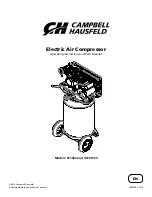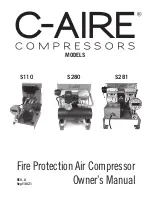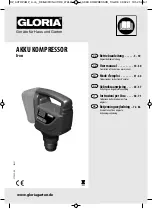
System design recommendations
Proper piping practices should be employed to
ensure adequate oil return, even under minimum
load conditions with special consideration given
to the size and slope of the tubing coming
from the evaporator. Tubing returns from the
evaporator should be designed so as not to trap
oil and to prevent oil and refrigerant migration
back to the compressor during off-cycles.
Piping should be designed with adequate
three-dimensional flexibility. It should not be in
contact with the surrounding structure, unless
a proper tubing mount has been installed.
This protection proves necessary to avoid
excess vibration, which can ultimately result
in connection or tube failure due to fatigue
or wear from abrasion. Aside from tubing and
connection damage, excess vibration may be
transmitted to the surrounding structure and
generate an unacceptable noise level within that
structure as well (for more information on noise
and vibration, see the section on: "Sound and
vibration management").
Essential piping design
considerations
Suction lines
Discharge lines
Heat exchangers
Successful application of scroll compressors
is dependent on careful selection of the
compressor for the application. If the compressor
is not correct for the system, it will operate
beyond the limits given in this manual. Poor
performance, reduced reliability, or both may
result.
General
If the evaporator lies above the compressor, as
is often the case in split or remote condenser
systems, the addition of a pump-down cycle
is strongly recommended. If a pump-down
cycle were to be omitted, the suction line must
have a loop at the evaporator outlet to prevent
refrigerant from draining into the compressor
during off-cycles.
If the evaporator were situated below the
compressor, the suction riser must be trapped so
as to prevent liquid refrigerant from collecting at
the outlet of the evaporator while the system is
idle, which would mislead the expansion valve's
sensor (thermal bulb) at start-up.
When the condenser is mounted at a higher
position than the compressor, a suitably sized
«U»-shaped trap close to the compressor is
necessary to prevent oil leaving the compressor
from draining back to the discharge side of the
compressor during off cycle. The upper loop also
helps avoid condensed liquid refrigerant from
draining back to the compressor when stopped.
An evaporator with optimized distributor and
circuit will give correct superheat at outlet and
optimal use of the exchange surface. This is
critical for plate evaporators that have generally
a shorter circuit and a lower volume than shell &
tubes and air cooled coils.
For all evaporator types a special care is required
for superheat control leaving the evaporator and
oil return.
A sub-cooler circuit in the condenser that creates
high sub cooling will increase efficiency at high
condensing pressure.
Furthermore, for good operation of the
expansion device and to maintain good
efficiency in the evaporator it is important
to have an appropriate sub cooling. Without
adequate sub cooling, flash gas will be formed at
the expansion device resulting in a high degree
of vapor at the expansion device inlet leading to
low efficiency.
HP
13 ft/s or more
0.5% slope
To condenser
max. 13 ft
max. 13 ft
0.5% slope
U-trap, as short as possible
U-trap
13 ft/s or more
U trap, as short as possible
Evaporator
LP
26 to 40 ft/s
HP
LP
Condenser
3D flexibility
U Trap
Upper loop
Application guidelines
32
FRCC.PC.003.A5.22
















































